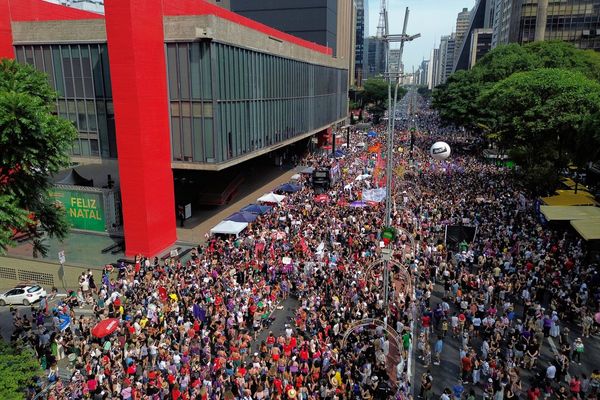Countries across Asia are counting the cost after one of the strongest storms to hit the region in years battered the coast of southern China before finally weakening as it entered Vietnam on Thursday.
Typhoon Ragasa had already killed 11 people in the Philippines and another 14 in Taiwan before it brought megacities including Hong Kong, Macau and Guangzhou to a standstill this week.
The storm, the world’s strongest so far this year, made landfall near Yangjiang in southern China at around 5pm local time on Wednesday with sustained winds of 144kmph, before weakening to a tropical depression as it slowly headed west into Vietnam.
On Thursday Vietnam’s prime minister, Phạm Minh Chính, ordered ministries and local authorities to protect key infrastructure such as dams and hospitals, secure fishing vessels, and prepare evacuation and rescue operations.
Some flights were cancelled or rescheduled, and workers trimmed roadside trees in northern provinces to reduce wind hazards.
The storm had sustained winds of about 65kmph on Thursday, down from its peak as a super typhoon with 265kmph winds earlier in the week. Forecasters said Ragasa would continue to weaken but remain a rain threat across parts of Southeast Asia in the coming days.
Earlier it brought waves taller than lampposts onto Hong Kong promenades and turned seas rough on the southern Chinese coast. A family who went to the coastline to watch the waves were swept away and in critical condition in hospital. The city’s international airport, a major global hub, halted operations for 36 hours before flights finally resumed after midnight on Thursday. Over 1,000 flights were cancelled and roughly 140,000 passengers affected.

In Taiwan, 14 people died as a wall of water crashed through the town of Guangfu after a barrier lake burst under the pressure of torrential rains from Typhoon Ragasa.
Residents described the flood as hitting like a “tsunami”, tearing down a major bridge, sweeping cars into homes, and forcing thousands to flee to higher ground.
The government said the lake released some 60 million tonnes of water – enough to fill 36,000 Olympic swimming pools – after rain-lashed landslides blocked a river and then gave way.

Taiwan’s government has launched an investigation into evacuation protocols. On Thursday, authorities were searching for 33 people missing after the disaster on the island’s remote east coast.
The victims were mostly elderly residents unable to climb to higher floors, raising questions about whether official guidance to seek “vertical evacuation” was appropriate.
“Beyond mourning the victims, we must investigate the causes of death, which predominantly occurred on the first floors,” premier Cho Jung-tai told a cabinet meeting on Thursday. “Clarifying these factors is essential for refining future evacuation protocols.”
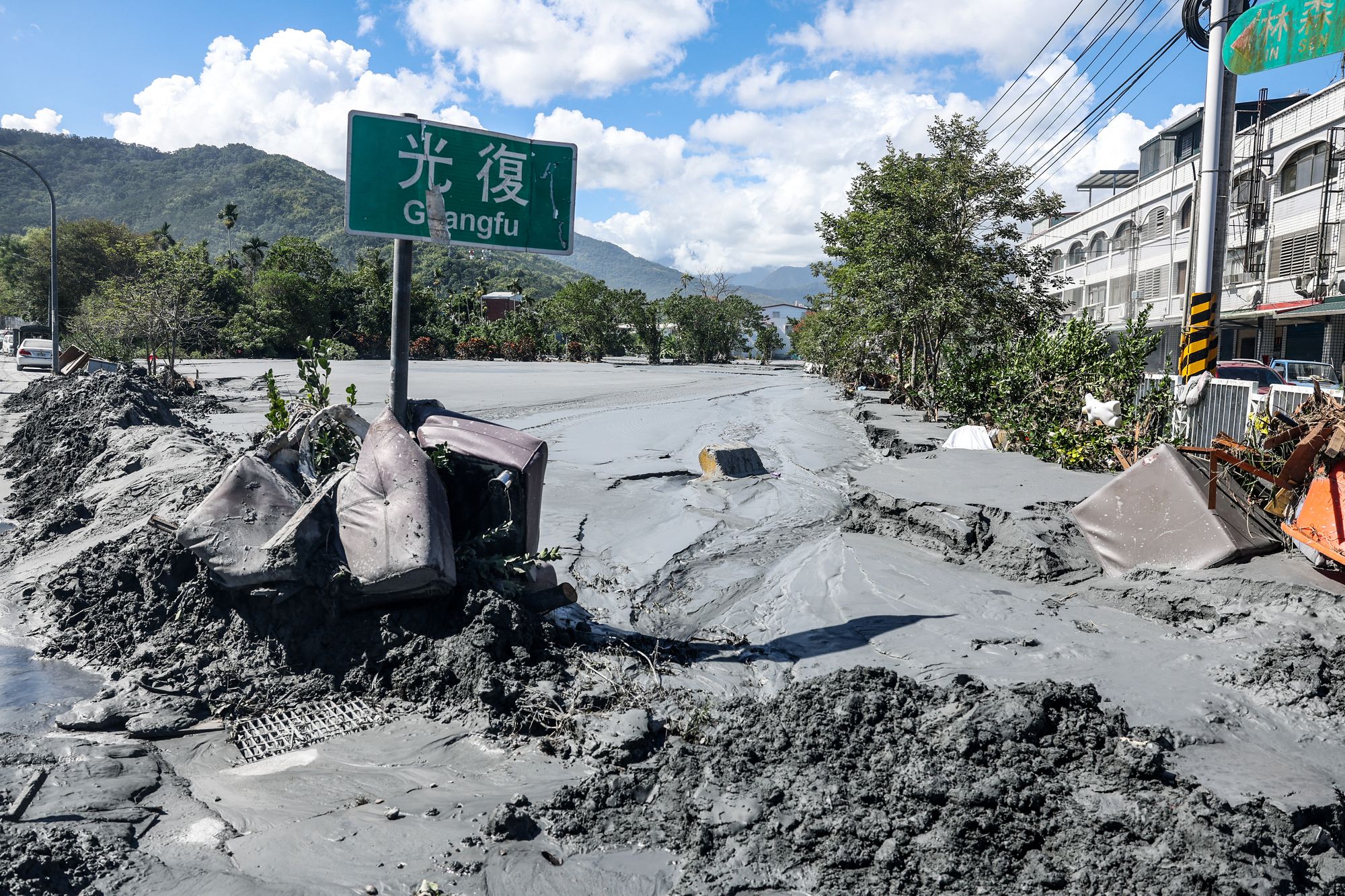
The storm may have slightly weakened as it made landfall in China as the equivalent of a Category 3 hurricane, but it still wreaked havoc in Guangdong, the southern Chinese economic powerhouse. On Thursday, nearly half a million homes were without power in southern China and in Yangjiang, one of the worst-hit cities, more than 10,000 trees were destroyed, leaving branches floating in submerged streets, according to Yangjiang Daily. Excavators were deployed to clear roads blocked by toppled trees.
A weather station in the province’s Chuandao town saw record maximum wind gusts of 241kmph at noon on Wednesday.
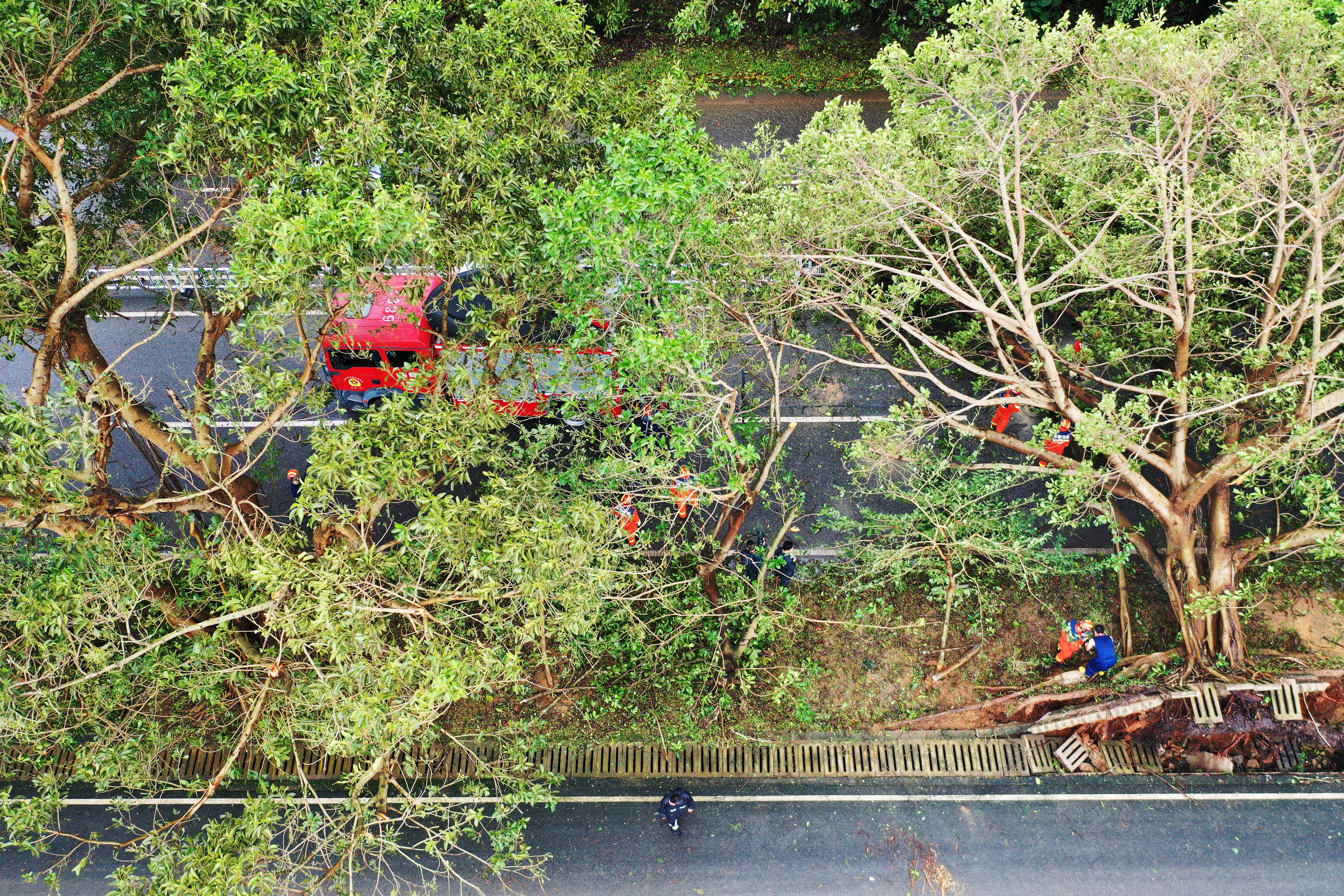
In Zhuhai, streets turned into rivers, forcing rescuers to use inflatable boats to reach stranded residents, while older neighbourhoods saw floodwaters inundate ground floors.
Communication was cut off in parts of Jiangmen’s island communities, Southern Weekly reported. In neighbouring Guangxi region, schools, businesses and tourism activities were suspended in several cities.
In total an estimated 2 million people were evacuated in Guangdong ahead of Ragasa, which earlier in the week peaked as a super typhoon with winds of 265kmph (165mph), the world’s strongest cyclone so far this year.
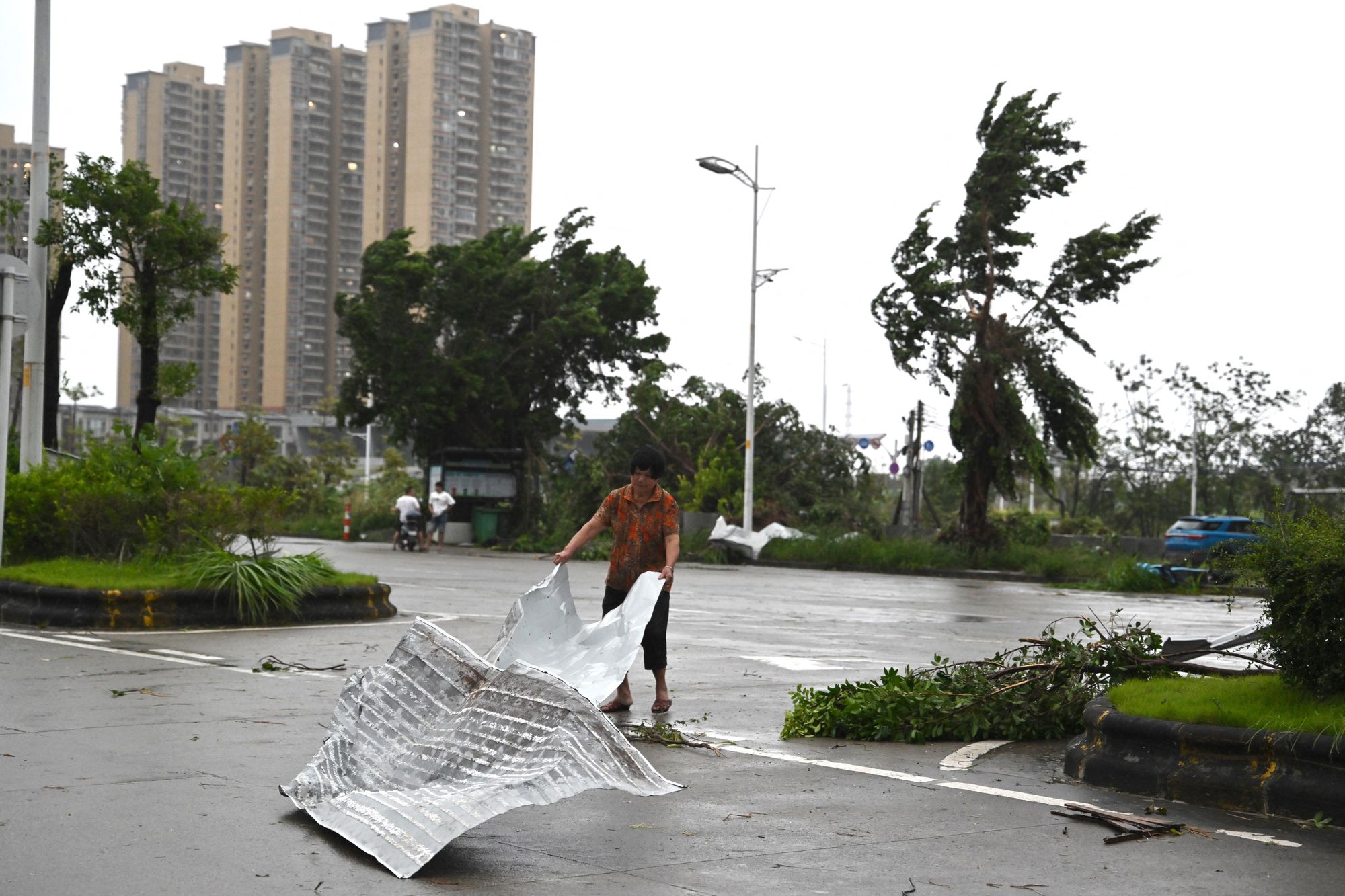
Schools, factories and transportation services were initially suspended in almost a dozen cities but a few of them distant from the landfall location were preparing to resume work as winds weakened.
Chinese authorities have earmarked 150m yuan (about £16m) in disaster-relief funds to support rescue and recovery work in provinces hit by the typhoon.
The ministries of finance and emergency management said the money would be directed to Guangdong, Hainan and Fujian, where it would be used for relocating residents, inspecting risks of secondary disasters, clearing hazards, and carrying out emergency repairs.
Earlier, in Hong Kong, fierce winds woke residents in the early hours, and many went online to describe scenes like a kitchen ventilation fan being blown down and a crane swaying.

Strong winds blew away parts of a pedestrian bridge's roof and knocked down hundreds of trees across the city.
A vessel crashed into the shore, shattering a row of glass railings along the waterfront. Areas around some rivers and promenades were flooded, including cycling lanes and playgrounds.
More than 100 people were treated in hospitals for injuries in Hong Kong. A mother and her five-year-old son are in critical condition after they were swept into the sea while wave-watching, authorities said.
A video from the financial hub showed waves of water crashing through the doors of a hotel at the Ocean Park resort and flooding its interiors. The hotel said on Facebook that the typhoon "made a dramatic entrance" but the guests and staff were safe.
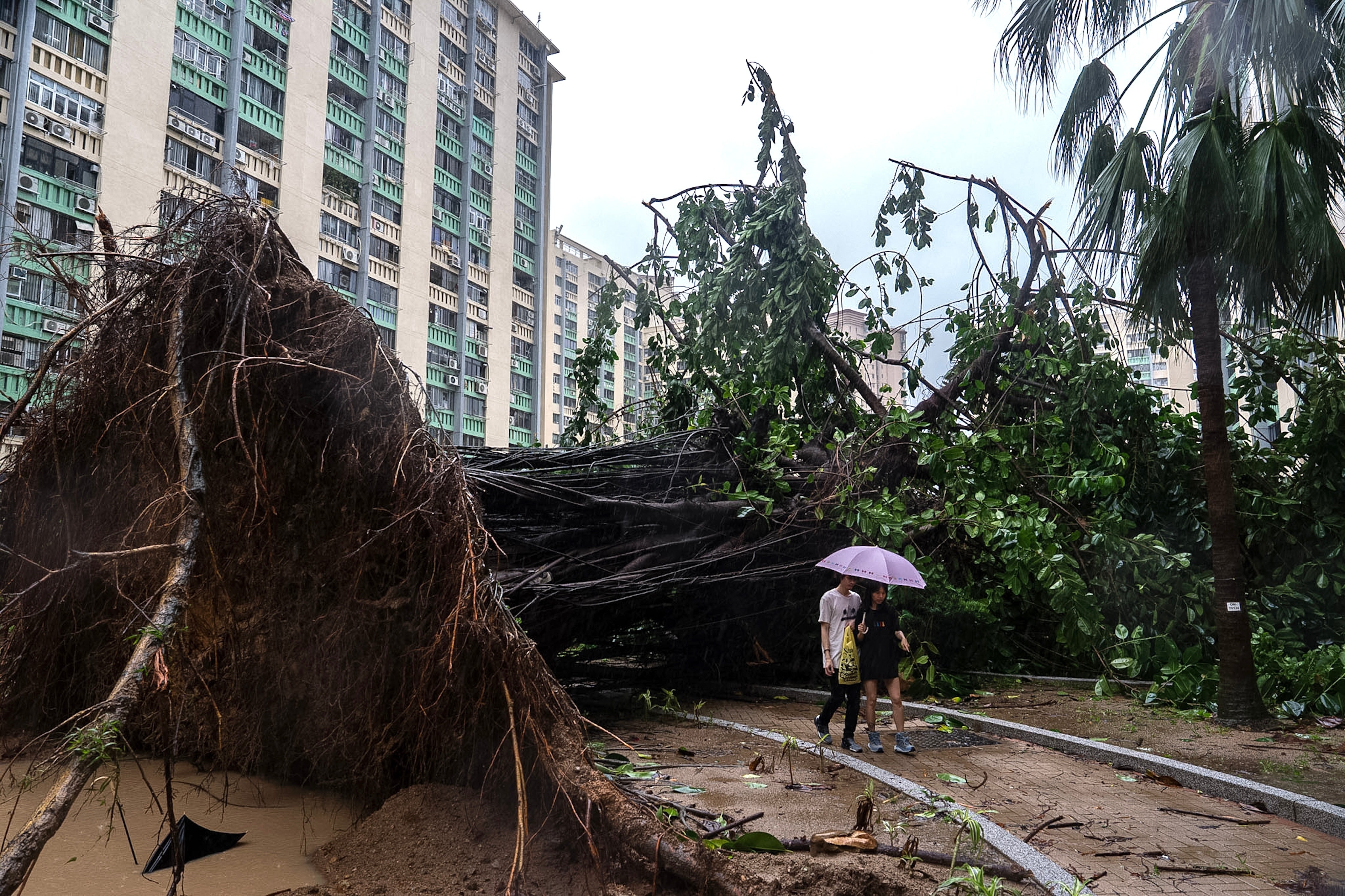
Sarah Millson, 50, told Hong Kong’s The Standard that she was stuck inside her home with her family when the typhoon hit.
“It’s quite worrying because you never know what will fly off someone’s roof and that might land on your place. At some points, it was quite terrifying hearing some of the noises coming from outside,” she said.
“There is a lot of flooding on this island. I know from the groups I’m on a lot of people who’ve lost wi-fi and some lost electricity. For other people on the island who are more exposed on the hillside, they probably would have had more damage than we did.”
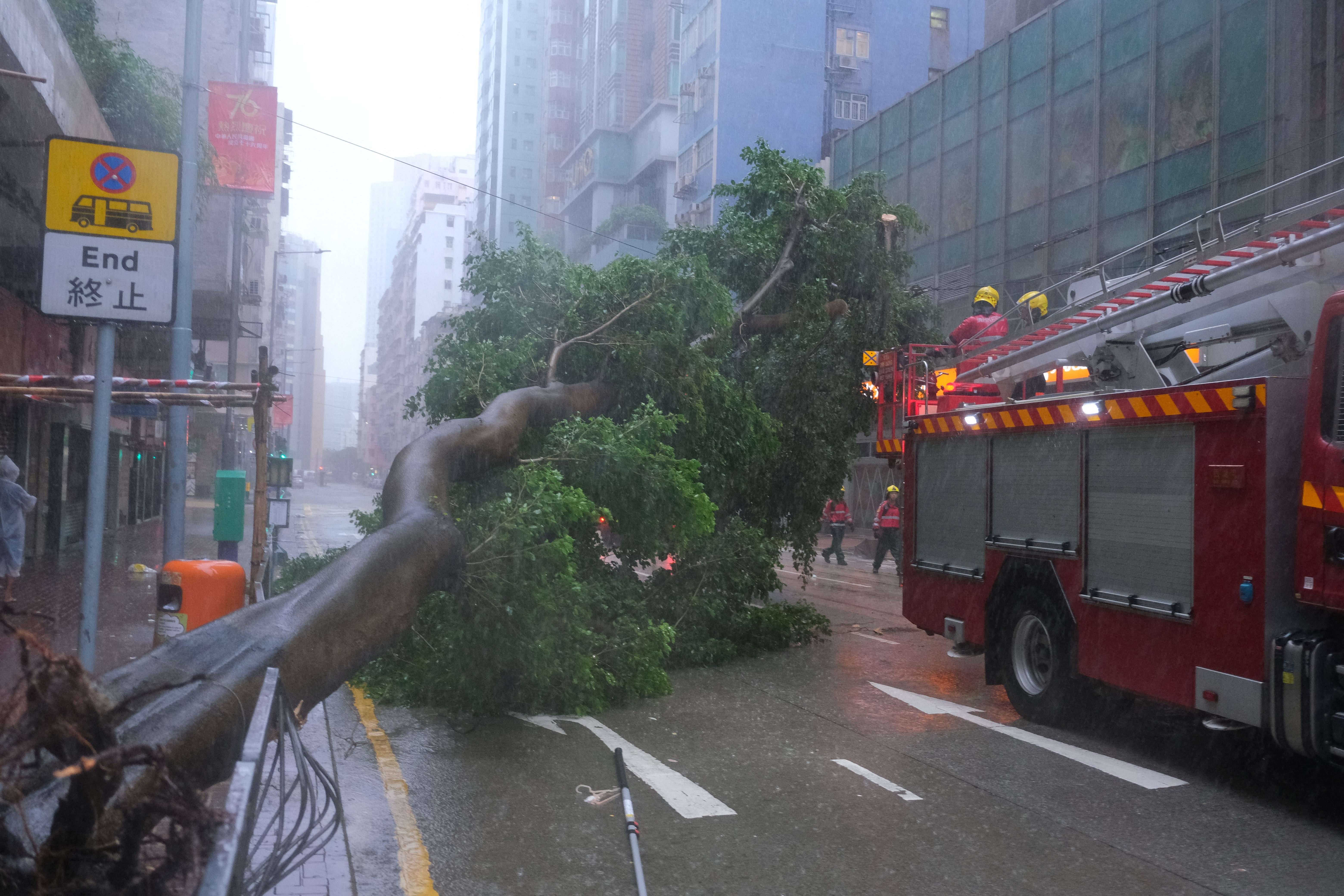
Streets in Macau turned into streams with debris floating on the water, prompting rescue teams to deploy inflatable boats to save those who were trapped.
The city's local electricity supplier suspended its power supply in some flooded areas for safety. As the winds eased, some people waded into flooded streets to catch fish.
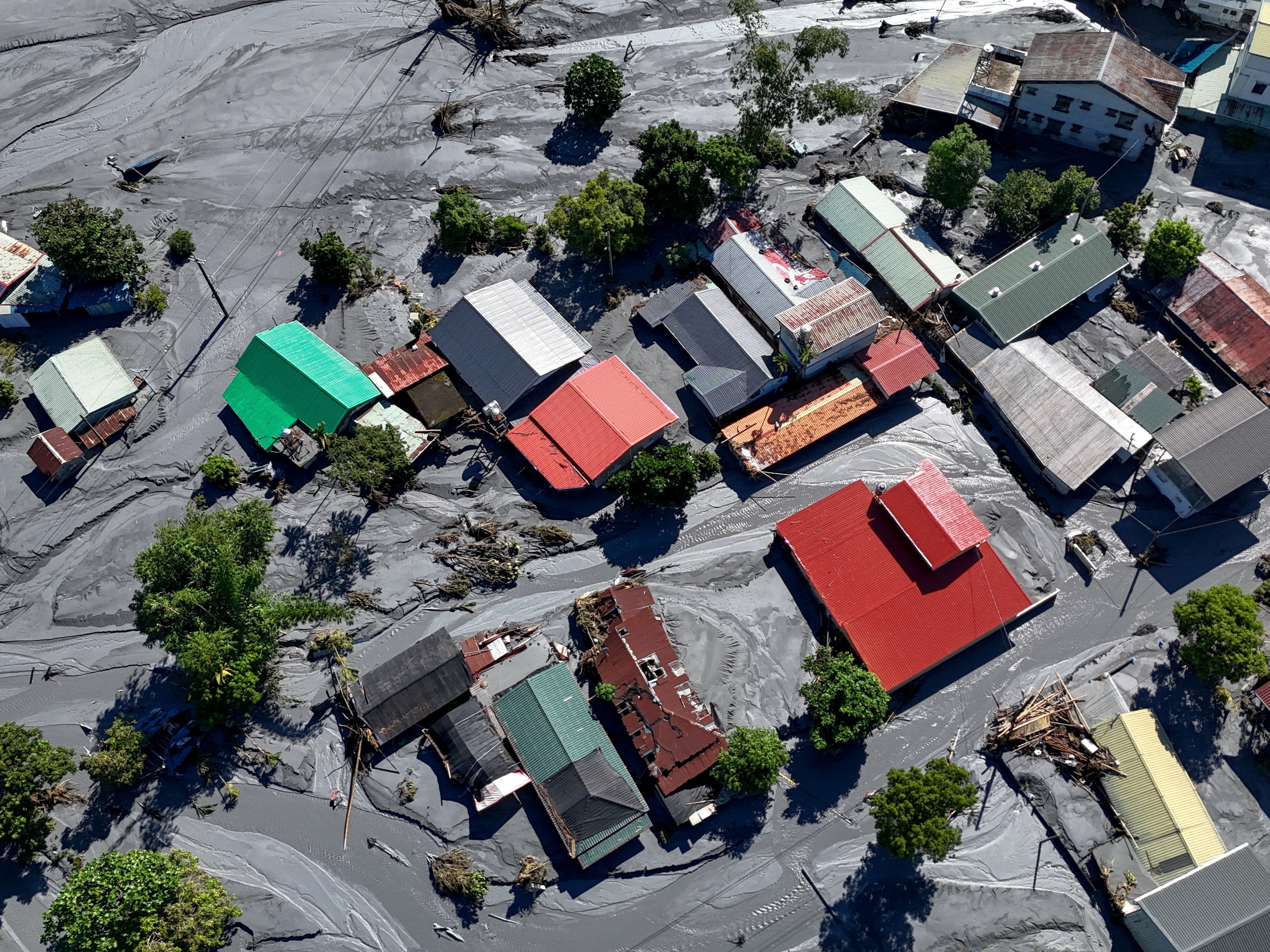
In the Philippines, where Ragasa first hit, at least 11 were killed, including seven fishermen who drowned on Monday when their boat overturned in northern Cagayan province. Two fishermen remained missing on Thursday.
Another tropical storm was approaching the Philippines from the Pacific. The storm, which was named Opong in the country and Bualoi elsewhere, was forecast to hit the east-central Philippines on Friday and could still strengthen into a typhoon. It had sustained winds of up to 110kmph (68mph) and higher gusts, government forecasters said.
